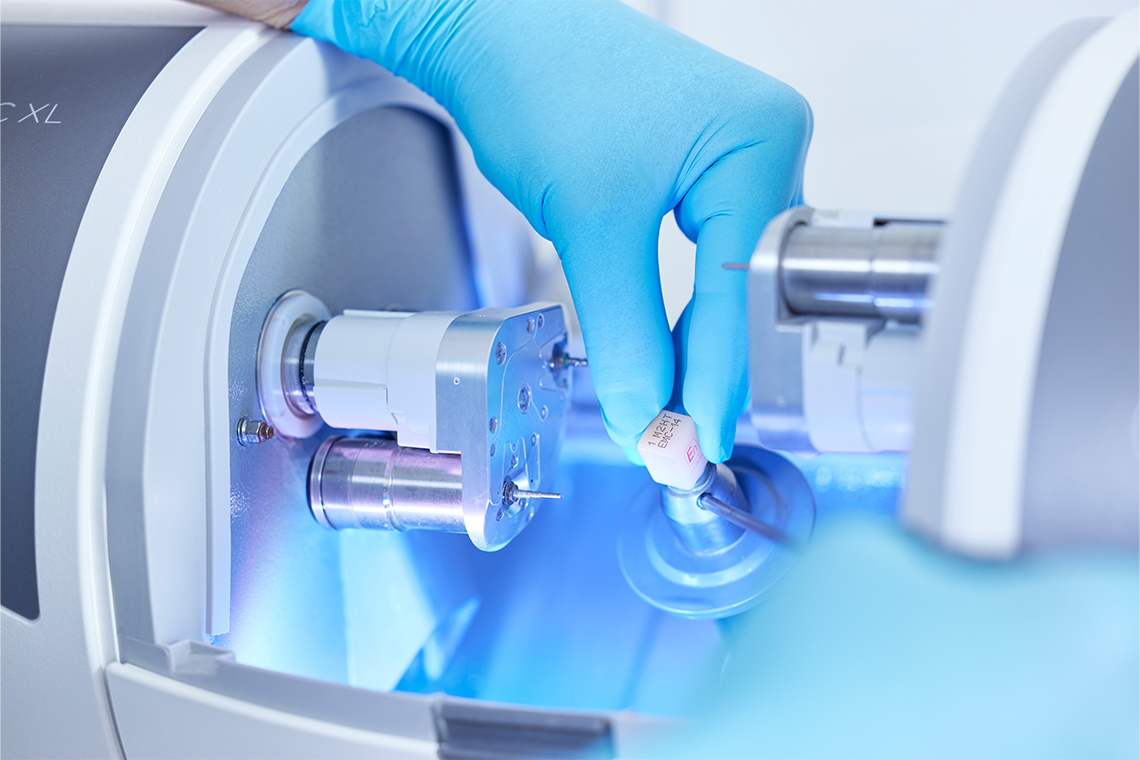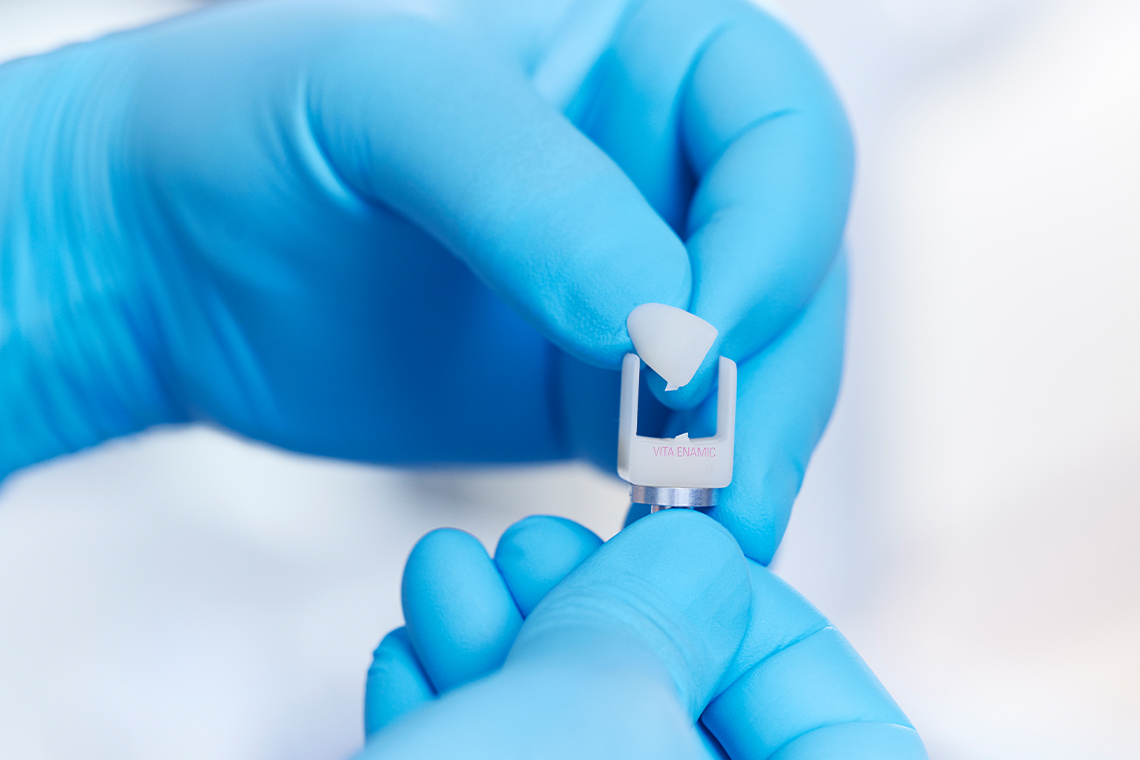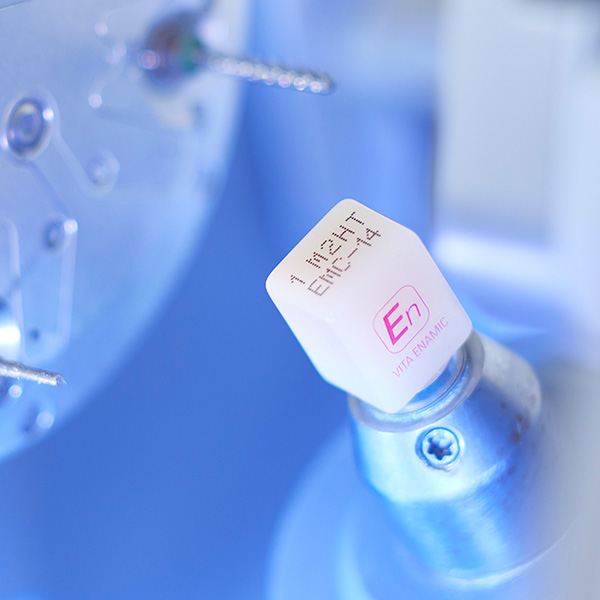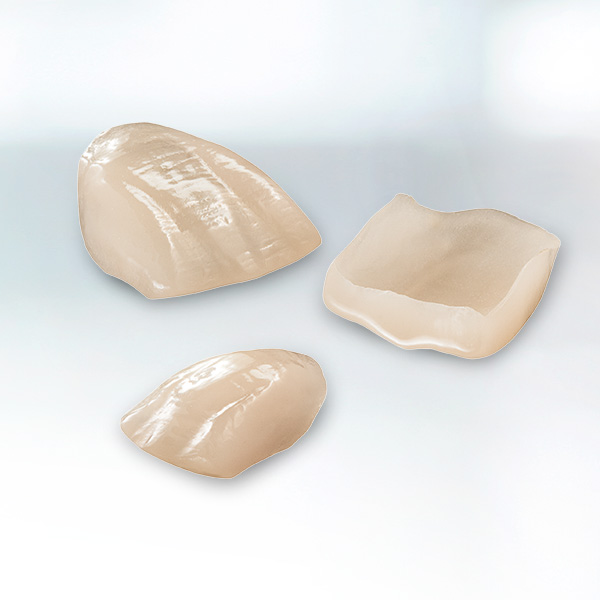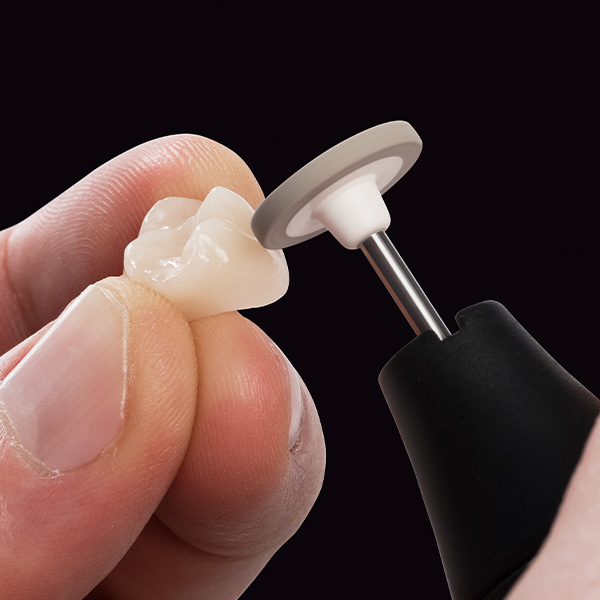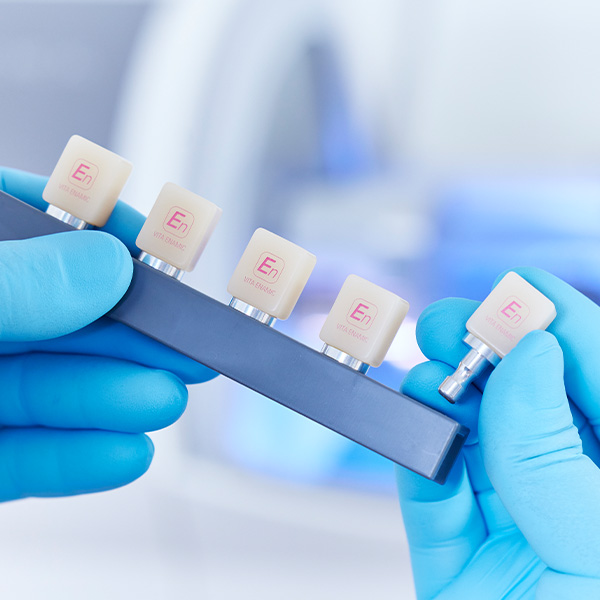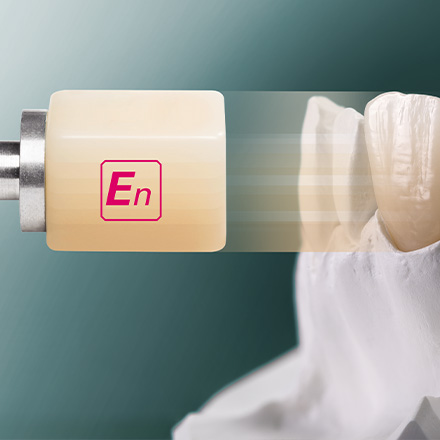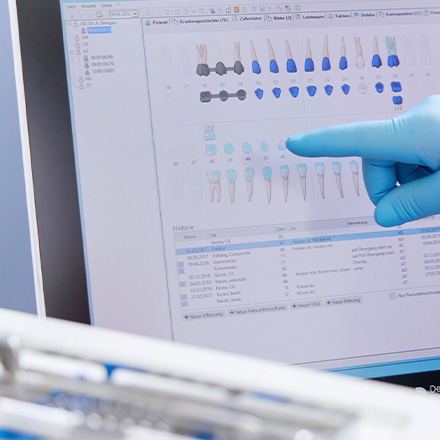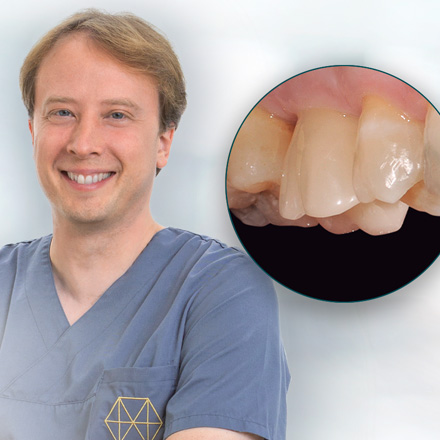In 2013, VITA ENAMIC, the world's first dental hybrid ceramic for the digital workflow was launched. Since then, the hybrid material has been the focus of international science. This is because the product is not composed of a common composite formulation where ground filling materials are mixed with a polymer. Instead, the hybrid ceramic consists of a unique dual network fabricated from a porous, presintered and compact feldspar ceramic block (86 wt.%) that is then infiltrated with a polymer (14 wt.%) under pressure and heat. This unique dual network is an innovative combination of the best of what ceramic and composite have to offer. The result: a block that absorbs force, can be milled in a highly precise fashion and enables efficient processing that saves time.
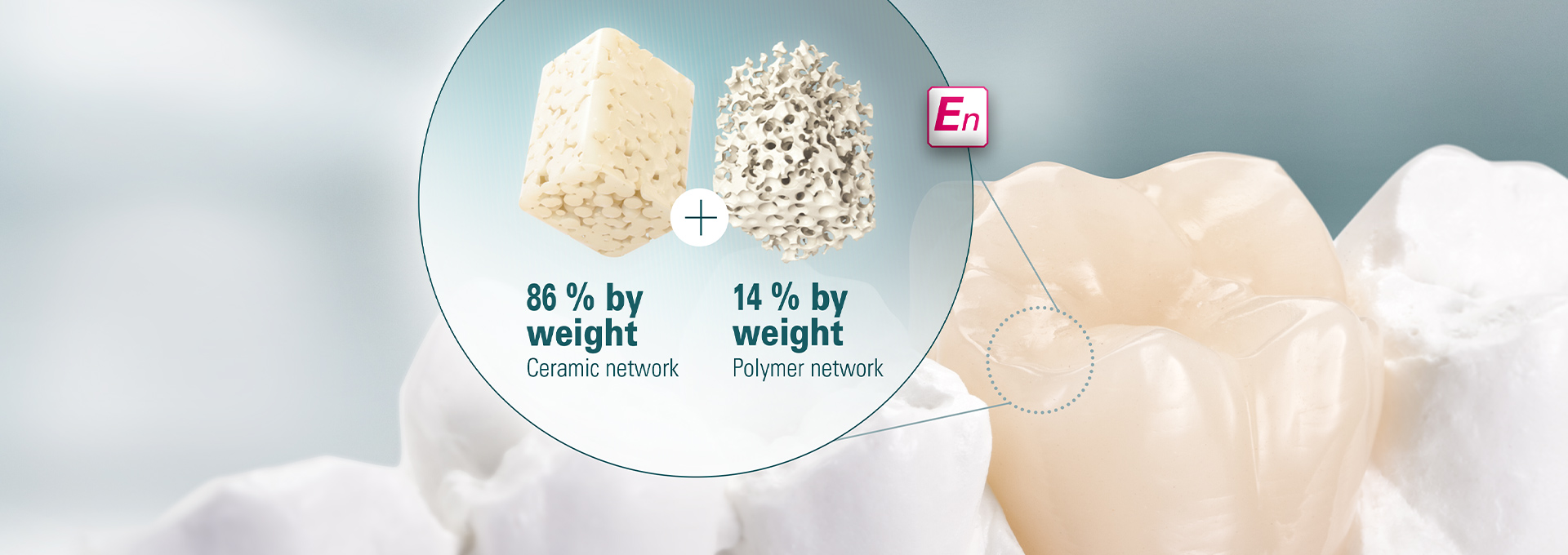
VITA ENAMIC – the only hybrid dental ceramic in the world with a dual-network structure
The best of both worlds
Feldspar ceramic is highly esthetic, offers the optical properties of natural hard tooth substance, and is extremely pressure-resistant in comparison with pure polymer materials. However, the brittle ceramic material does not compensate for high occlusal forces with elastic deformation. Polymers, on the other hand, can do just that. The combination of these two very different materials in a single network is what distinguishes VITA ENAMIC.
VITA ENAMIC's unique dual-network structure has given strength a new meaning. When processing and applying load to pure ceramic materials, microscopic cracks can develop that spread, resulting in chipping or fractures. In VITA ENAMIC's interlocking dual network, microscopic cracks in the ceramic are stopped where the interface with the polymer begins. The interaction between this crack-stop characteristic and the property of absorbing occlusal forces is the key to sustainable and predictable clinical success.
In addition to the esthetic properties of the feldspar ceramic, VITA ENAMIC users also benefit from rapid and low-wear milling workflows, similar to composite materials. Thanks to the dominant ceramic surface, proven fully adhesive bonding is possible using hydrofluoric acid etching and silanization. Investment in a sandblasting unit is not required; damage to the material structure does not occur, especially in delicate marginal areas.
The fabrication process
With VITA ENAMIC, the required shade effect is already visible when mixing the ceramic materials with the addition of the perfectly and precisely weighted shade formulation. Afterwards, the ceramic is pressed in block form and porously presintered. The porous block can be compared to a sponge that contains a network of finely branched channels. This capillary system can absorb liquids when it comes into contact with them, which is known as infiltration. In an everyday example, this capillary effect, as it is called, can also be seen when a sugar cube comes into contact with coffee. Within seconds, the coffee spreads rapidly inside the tiny cavities of the sugar cube. This is also what happens with the porous sintered ceramic block and colorless, flowable polymer. The ceramic cavities are completely infiltrated in a polymer bath. The polymer that has flowed in is then cured in a very complex polymerization process under controlled pressure and heat.
CAD/CAM blocks with 100% quality
Before the CAD/CAM blocks are printed as part of a final step and glued to the holder for the milling machine, they are subject to 100% quality control. Nothing escapes the eyes and touch of the critical inspectors. The block is meticulously turned and rotated in every direction during the test, so that dealers, and ultimately dental laboratories and dental practices, receive only the best VITA quality. After all, it is about the well being of patients who trust in high-quality care.
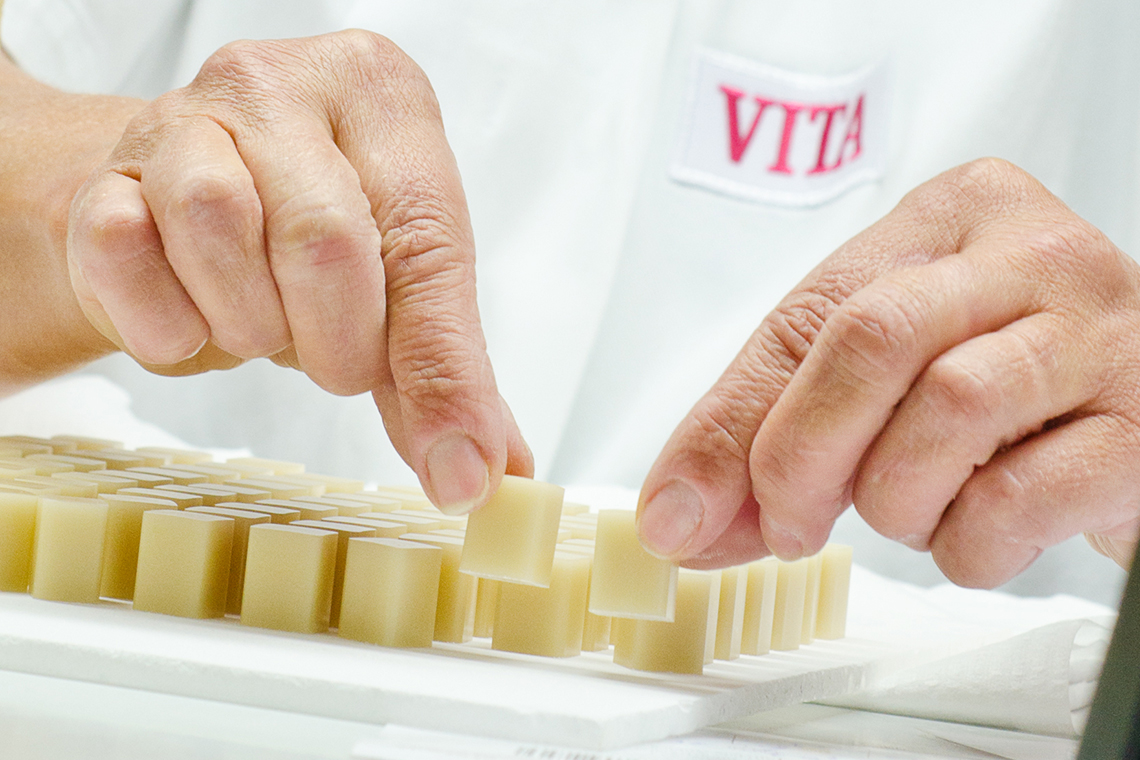
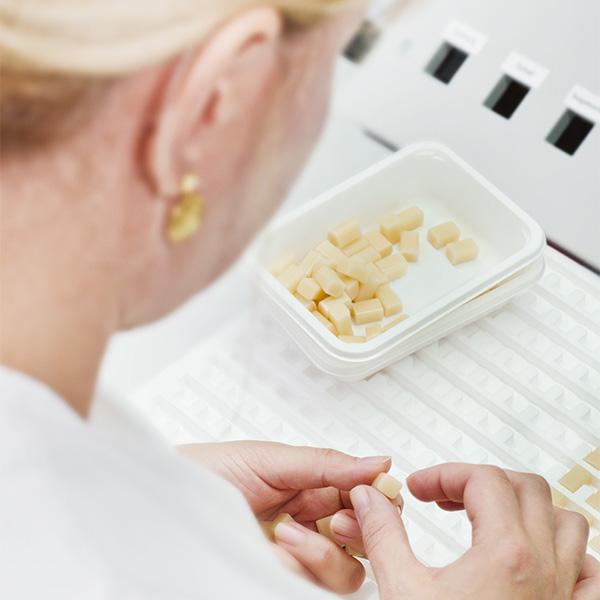
Properties similar to natural dentition and numerous benefits during processing, thanks to the VITA ENAMIC hybrid ceramic
Precise processing, reliable integration
Because the dual network is not as brittle as pure all-ceramic CAD/CAM materials, it can be milled far more precisely and thinly. This enables a precise marginal fit with marginal areas that measure just 0.2 millimeters. Instrument wear in this case is significantly lower than with all-ceramic blocks. VITA ENAMIC offers superior robustness during finishing and milling. Cracks in the ceramic are stopped where the interface with the polymer begins. The feldspar ceramic content dominates and can be conditioned in the usual fashion using hydrofluoric acid and silane, which results in high levels of adhesion, similar to all-ceramic materials.
Properties similar to natural dentition
Thanks to a flexural modulus similar to dentin, VITA ENAMIC can absorb occlusal forces. In other words, forces can be countered with elastic deformation, which results in resistant restorations and elimination of the functional load on the masticatory system. Patients report a comfort level and chewing sensation that is similar to that of natural hard tooth substance. [1] The abrasion of the hybrid ceramic is similar to that of enamel and also ensures harmonious integration of restorations, as well as preventing occlusal interference and functional disorders in long-term clinical outcomes.
Block range for efficient workflows
In addition to translucent and highly translucent variants, there are also super translucent and multichromatic material variants available for clinical use, in order to make the right block selection with the appropriate shade effect for different clinical situations in the anterior and posterior regions. After finishing and polishing, the appearance of the restorations is similar to that of natural dentition, and they are ready for use without any need for firing. [2] Clinical studies show that the positive material properties of hybrid ceramics are also reflected in a positive impact in the mouth.
Are you interested? Click here and find out more:
- [1] Mainjot AKJ. The "one-step, no-prep" technique: A straightforward and minimally invasive approach for full-mouth rehabilitation of worn dentition using polymer-infiltrated ceramic network (PICN) CAD-CAM prostheses. J Esthet Restor Dent 2020 Mar; 32(2): 141-149.
- [2] Steinbrenner H. Multichromatic and highly translucent hybrid ceramic Vita Enamic. Int J Comput Dent 2018; 21(3): 239-250.


